As an overnight backpacking guide in Yosemite, I’ve learned the difference between agony and bliss in the backcountry boils down to practicality and reliability of my trail gear—most specifically when it comes down to clothes. Since backpacking is a minimalist venture, my wardrobe usually consists of one specialized outfit I can rely on to keep me warm, dry, and otherwise comfortable for days on end in the elements. This is the trail gear that comes with me on every trip.
The Only Trail Gear You Need, According to a Backpacking Guide
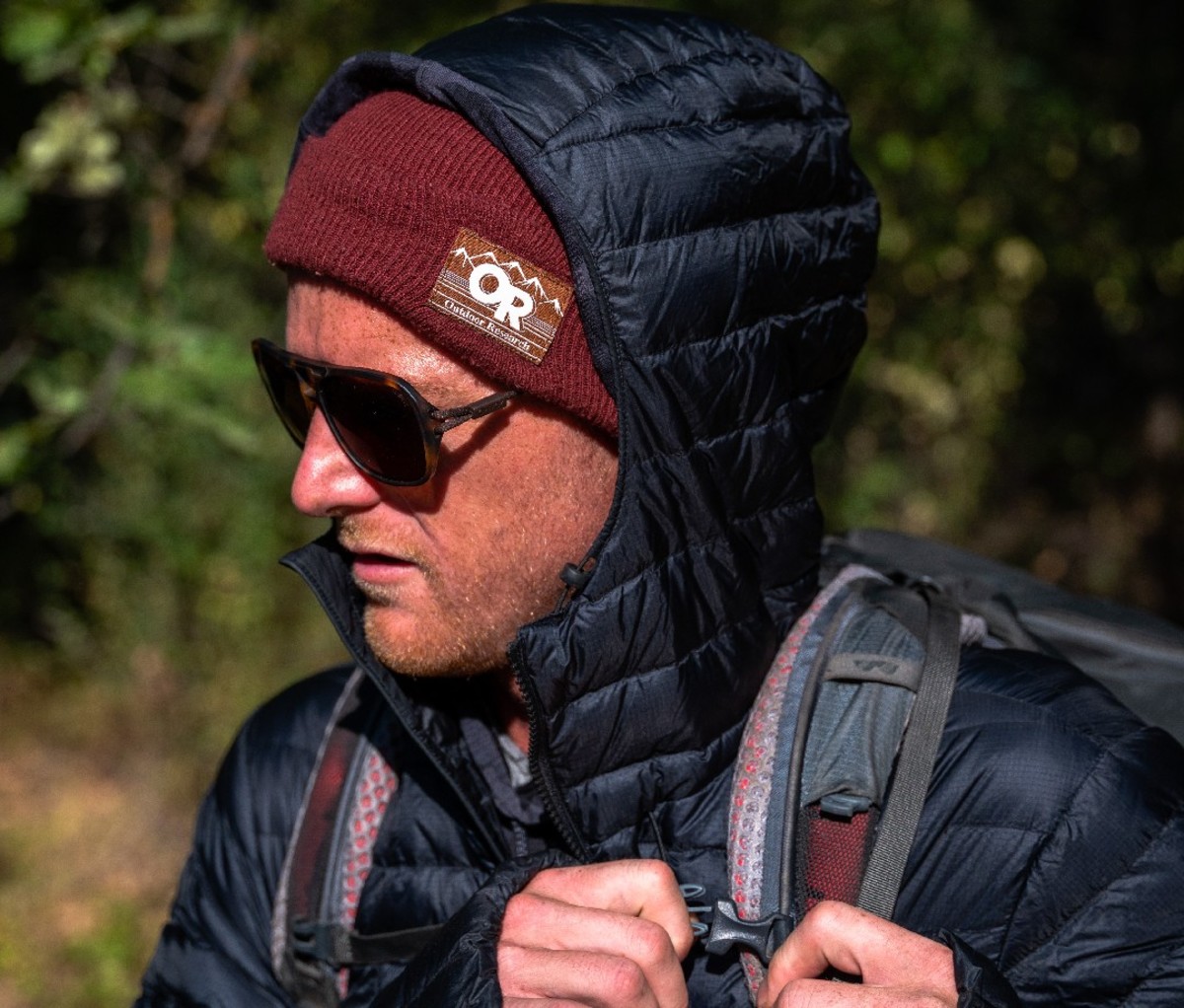
1. Outdoor Research Juneau Beanie
This no-frills, feather-light beanie hasn’t stretched out or worn through after a year and a half of hard use. Its design was inspired by Alaskan fisherman—hence its name—and for a head sock that only weighs 2.3 ounces, its insulation value is ample. Winter or summer, it’s a staple in my pack when the temps drop after sundown.
[$25; outdoorresearch.com]
Get it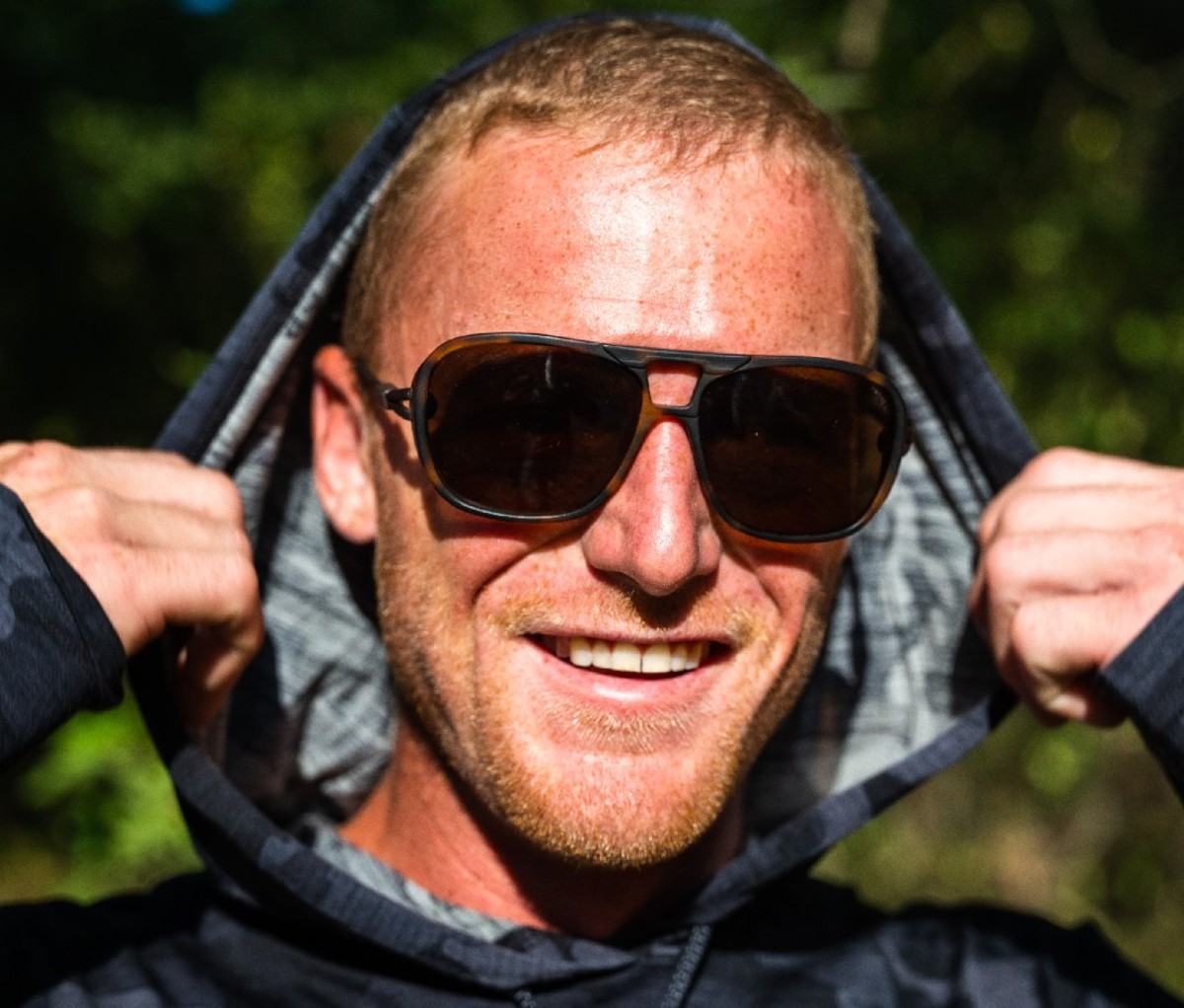
2. Ombraz Leggero
Armless sunglasses seemed like a goofy concept at first, then I took the Leggeros backpacking and realized they’re actually super practical. I cannot stress enough the convenience of a pair of shades that won’t fall off or break when sat on or stuffed into a bulging pack. The Leggeros fit comfortably and securely; they have high-quality, polarized lenses; and, despite the preconceptions attached to glasses without arms, they’re actually pretty cool looking.
[$140; ombraz.com]
Get it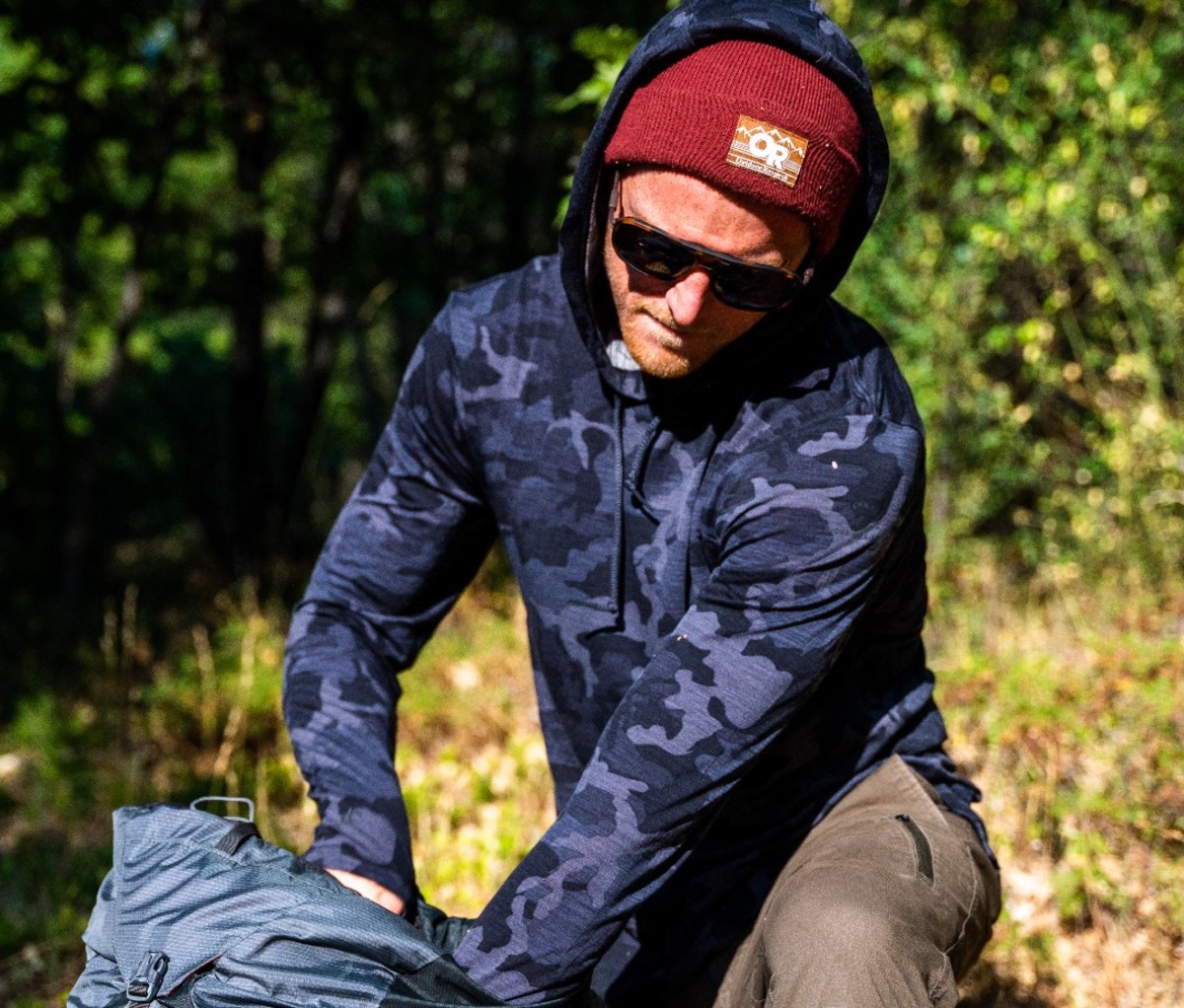
3. Ridge Merino Solstice
For backpacking, I look for thin, warm layers that dry quickly. No material does this combo better than merino wool—and Ridge Merino, a Mammoth-based brand engineered around snow sports, is the merino wool expert. This sun hoodie is the ideal thickness to keep warm when the weather’s cold, and cool when it’s hot. It dries faster than any other sun hoodie I’ve tried, so breaking a sweat on an alpine summit doesn’t compromise my R-value. I tested this during a sweaty splitboarding ascent of Mt. Lassen and never once got the wet chills. Plus, the hood is big enough to cinch over an alpine helmet.
[$80; ridgemerino.com]
Get it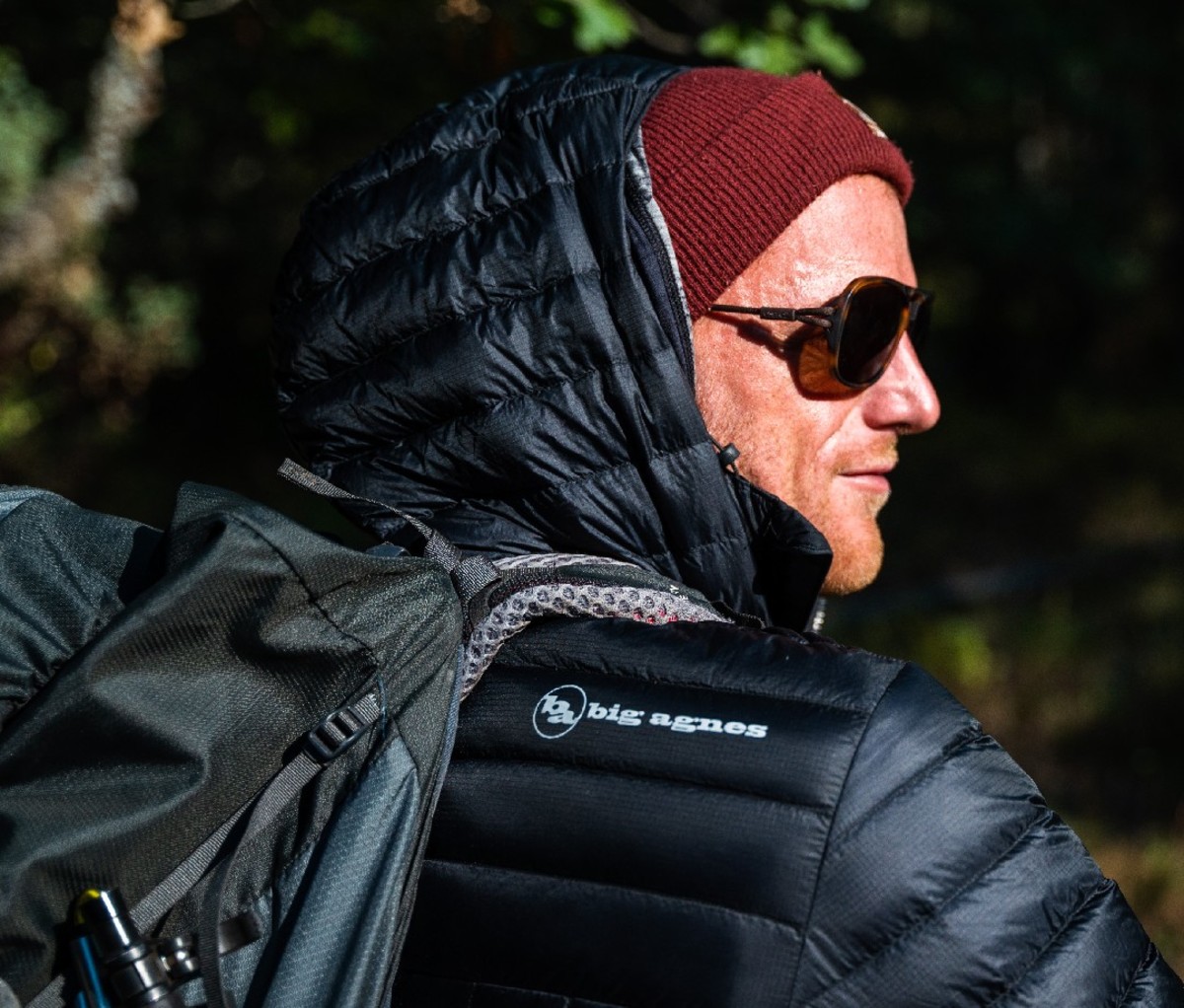
4. Big Agnes Soda Peak
Part of Big Agnes’ new down jacket line for 2021, the Soda Peak comes with me on every backpacking trip. Its 850 fill pairs with a mid layer to stay cozy on subzero nights. The water-resistant down (great for snow activities) dries quickly without leaving behind the “wet dog” smell. The vertically stitched paneling makes an extra comfy yet aesthetically pleasing fit, and the thickness is ideal for a stout four-season all-arounder. I use the thumb holes on extra cold occasions, and my size medium only weighs 12 ounces, packing into a fist-size ball that requires minimal real estate in my pack.
[$150; bigagnes.com]
Get it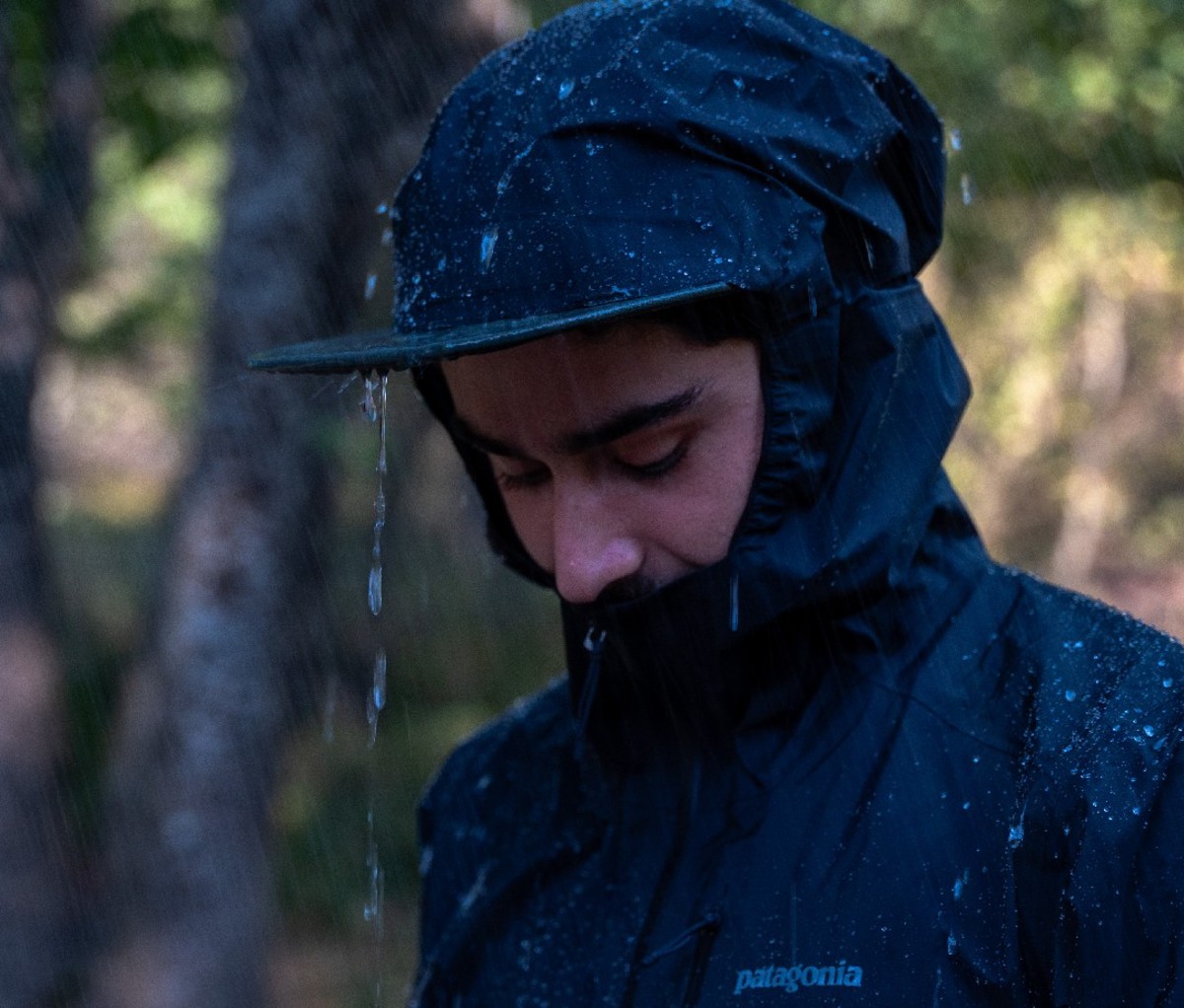
5. Patagonia Storm 10 Jacket
This ultralight rain shell has kept me dry during some torrential High Sierra showers this summer. Weighing in remarkably light at 8.3 ounces, it takes up minimal space in my pack. The Storm 10 has loads of thoughtful design features when the rain comes: There’s an internal storm flap; tapered cuffs; and a helmet-compatible, drawstring-controlled hood. It doubles as the only layer in my pack that mosquitoes can’t penetrate, which comes in clutch rain or shine. In line with Patagonia’s philanthropic and environmental missions, it’s fair-trade certified and uses 100 percent recycled nylon.
[$300; patagonia.com]
Get it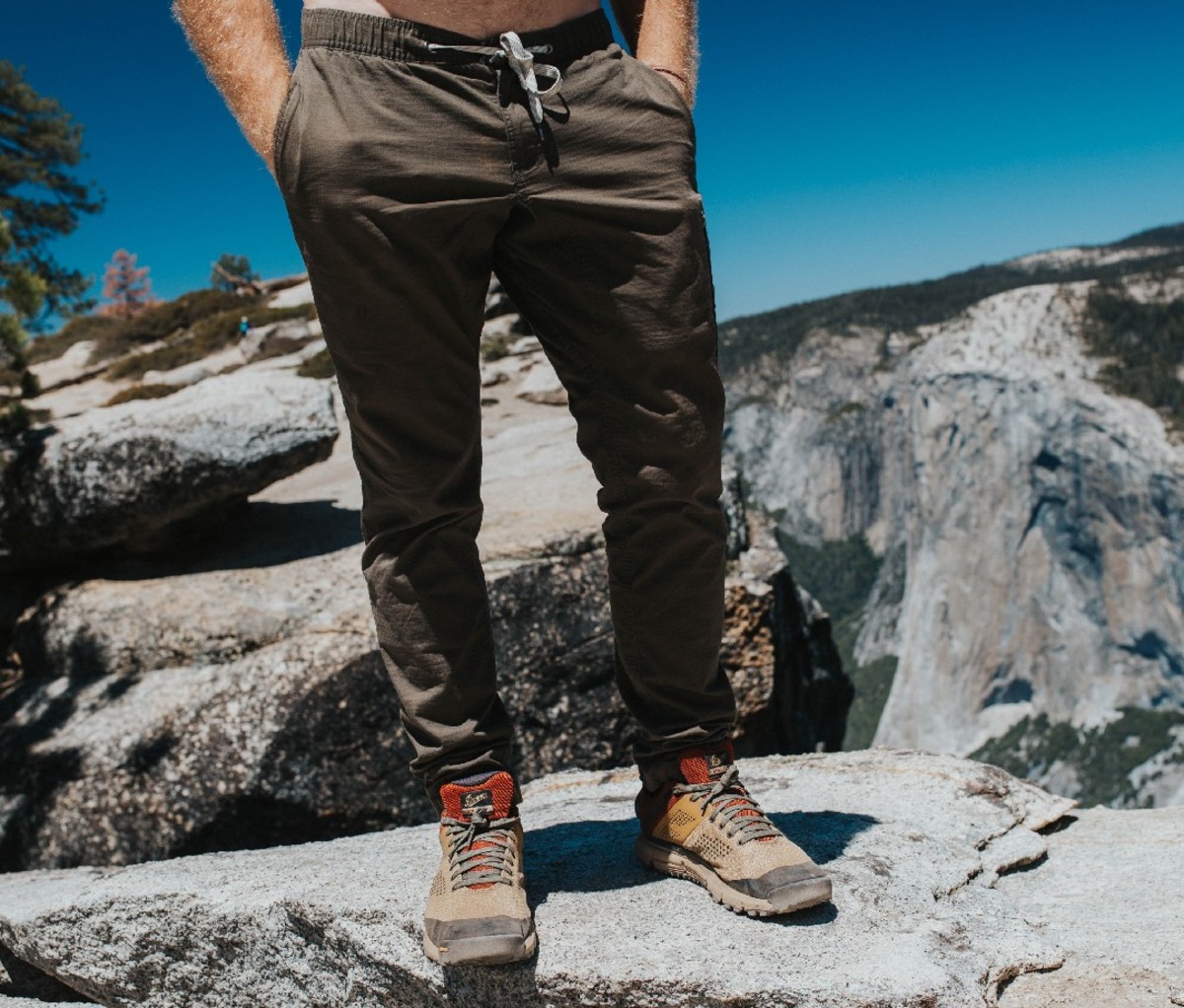
6. Vuori Ripstop Climber Pant
Vuori is known for casual beach and exercise wear—not the most likely candidate for top-level backpacking attire—but I find the Climber Pant ticks all the boxes. The rip-stop material is rugged—not easily torn—and fairly impermeable by dirt and moisture. It’s also liberatingly stretchy and features well-placed, generous pockets. The elastic ankles work well to keep dirt and rocks out of socks, while the drawstring waistband means I don’t need to pack a belt. For me, the best aspect of these hiking pants is the fit around the waist. The waistband rides well under the hip belt and doesn’t chafe my hip bones like other hiking pants I’ve tried.
[$89; vuoriclothing.com]
Get it
7. Darn Tough Hiker Socks
Considering these are the only socks I wear for backpacking, and I’ve used the same pair all season, these puppies merit the high price point. They’re as durable as any sock I’ve tested, breathable, and comfortable as can be, making blisters a nonissue. The quick-drying material keeps the socks from getting crusty (although it won’t keep them from smelling). If they do get crispy mid-trip, I can rinse them out in the evening and they’ll be dry enough to hike by morning.
[$26; darntough.com]
Get it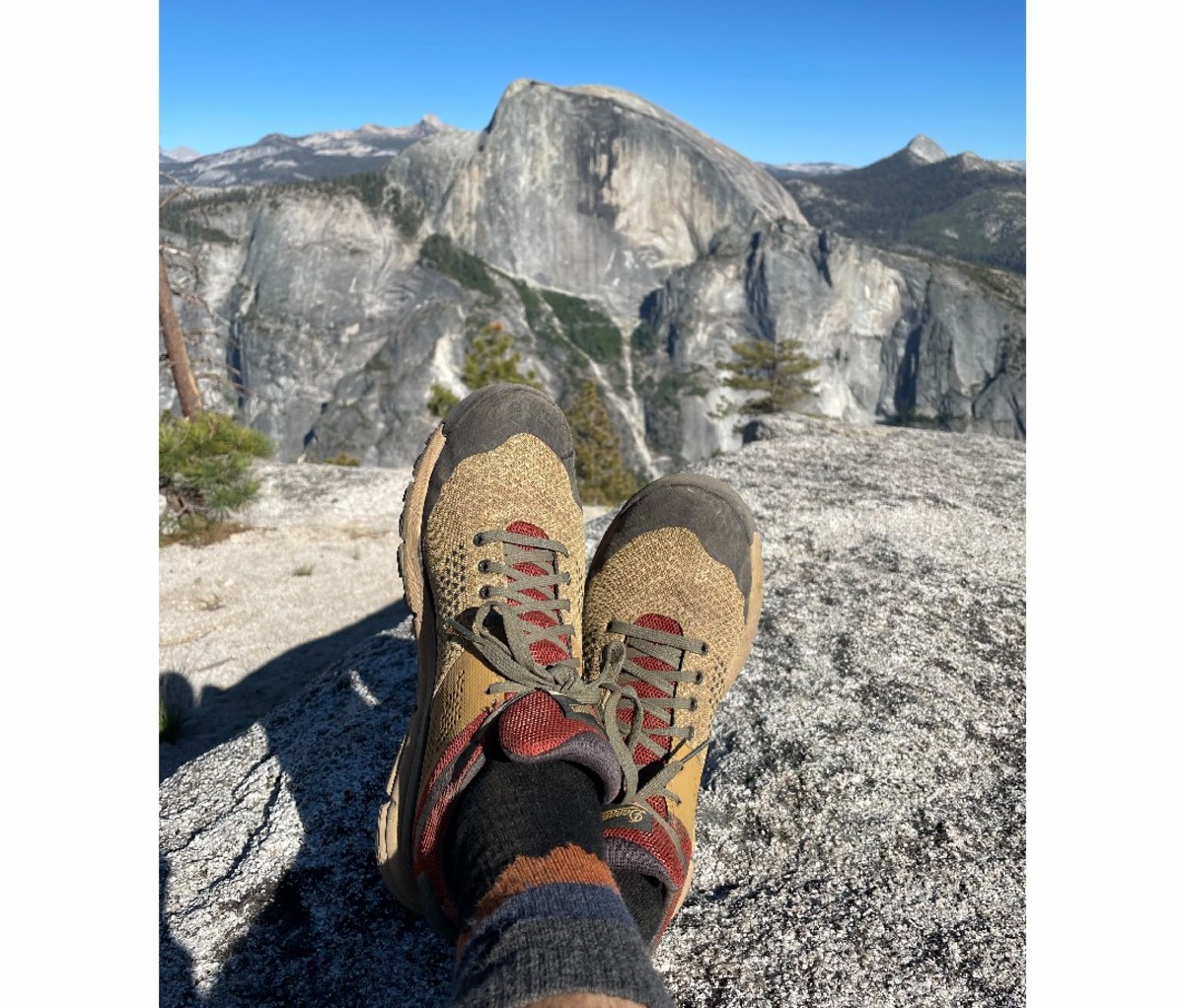
8. Danner Trail 2650 Mesh
Danner’s 2650 line produces the best trail shoes I’ve ever owned, bar none. They’re light, durable, comfy enough for camp and stout enough for the trail, plus the Vibram soles provide superior grip to any shoe I’ve tested. The 2650 Mesh grabs granite whether wet, dry, gritty, or polished. Where the standard Trail 2650s are completely waterproof up to the ankle, the Mesh are far more breathable and light, making for a more comfortable fit on hot summer days. Beyond the feel, toughness is a critical factor for me in a pair of shoes and Danner has that dialed in. They’re not bombproof like some others in the line (see Trail 2650s), but the breathability is a worthy exchange for summertime. These shoes are the undisputed MVP of my trail gear.
[$140; danner.com]
Get it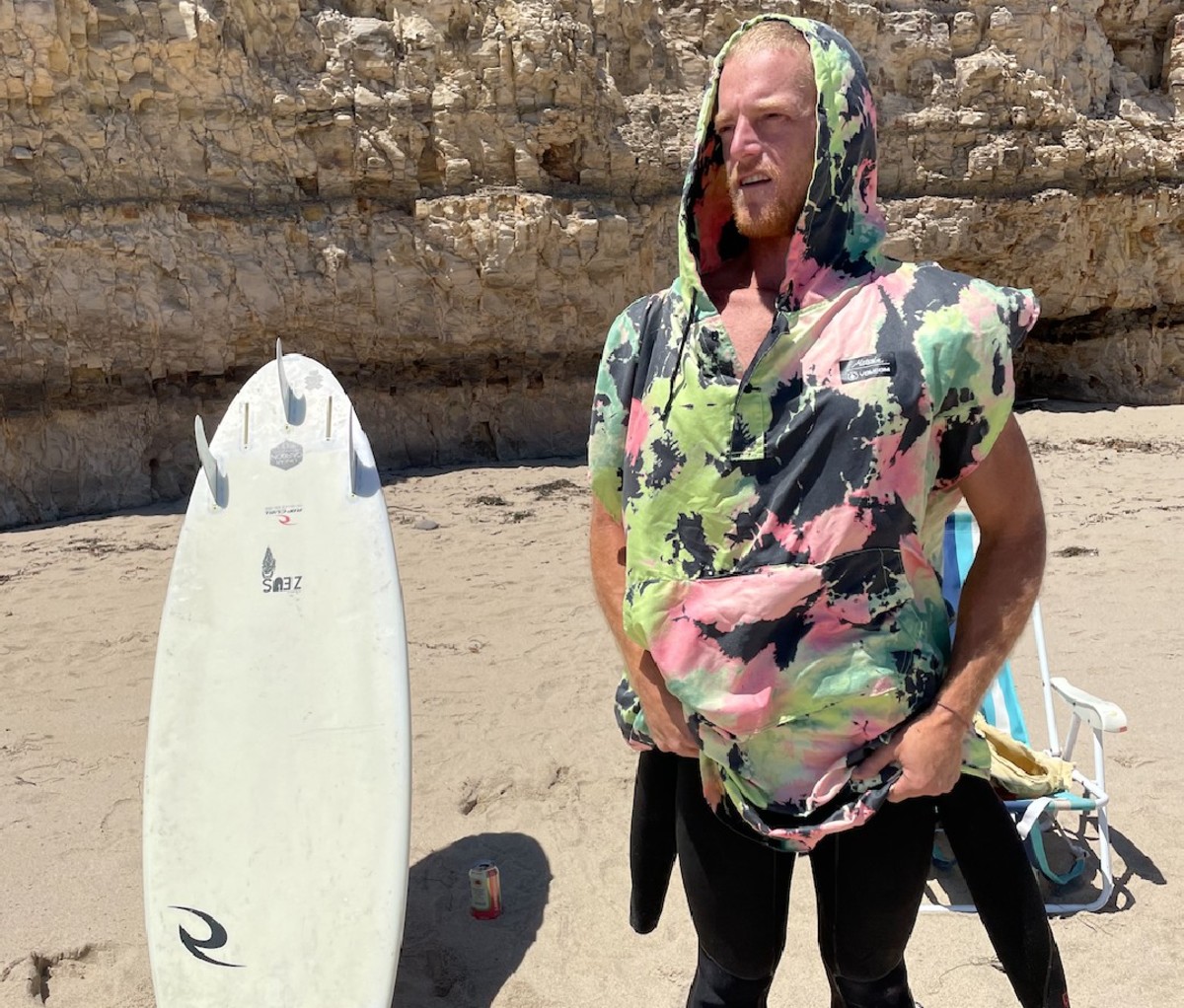
9. Volcom + Matador Towel Poncho
Volcom’s collaboration with the up-and-coming backpack brand Matador is a critical, novel pack towel that makes changing on the fly as convenient as possible. This 10-ounce, nanofiber garment absorbs more than twice its weight in water. It doubles as both my ultra-light towel and ultra-convenient changing facility.
[$60; matadorup.com]
Get itMike Misselwitz is a lead guide for Lasting Adventures, a backpacking guide service and nonprofit youth adventure camp based in Yosemite, Olympic, and Lassen Volcanic National Parks.
from Men's Journal https://ift.tt/3iLyQLV


No comments:
Post a Comment